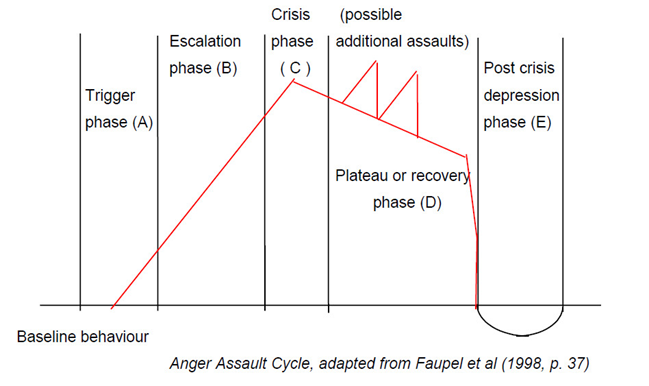Managing Conflict Through Communication
May 12, 2023
Many employees spend half of their waking hours with their colleagues. Work relationships, like all relationships, are bound to have conflict, no matter how harmonious your team may be. At the root of most conflict is a break down in communication. When communication flows, people understand one another better. Creativity is fostered, information goes where it needs to be, and roles are understood. But when communication breaks down, creativity is stifled, ideas are not shared, work becomes less enjoyable, and conflicts may occur.
When there is negative conflict, this can cause stress and relationships can suffer. Not all conflict is bad, however. Positive conflict can increase understanding, strengthen bonds, and help both parties get their needs met. All types of relationships, both professional and personal, can benefit from improved conflict management strategies to turn potentially negative encounters into positive relationships.
The Three Legs of Conflict
Conflict is supported by three elements: content, emotion, and process.
- Content – What the conflict is about and the problem that must be solved.
- Emotion – How we feel. To be most effective in resolving conflicts, we must manage our own emotions and acknowledge other people’s. Emotions may be triggered by the issue itself, the history between individuals, or something else going on in someone’s life. Understanding and managing emotions is very important to resolution. People who experience anger during conflict are poor communicators and problem-solvers.
- Process – How we talk and treat each other to deal with the conflict. If people don’t feel heard or acknowledged, they will likely turn a conversation into an argument. Changing the way we talk and listen can help the issues become clearer and lead to better understandings, rather than energy-wasting and inefficient arguments.
Conflict Management Styles
There are multiple approaches to managing conflict. Not all the strategies are superior in all situations. Consider scenarios in which some of the below strategies may be more effective than others:
- Compete/Direct – I win, you lose. Based on valuing goals over relationships. Conflicts are settled by one person winning, and the other losing.
- Avoid – I zig, you zag. – Based on giving up goals and relationships. It is considered easier to avoid conflict entirely.
- Harmonize – I lose, you win – Based on valuing relationships over goals. Conflict is viewed as damaging to relationships, so goals are given up to maintain harmony in relationships.
- Compromise – I bend, you bend – Based on moderately valuing goals and relationships. The middle-ground approach. Each person gives up part of their goals to reach a common solution.
- Collaborate – I win, you win – Based on valuing goals and relationships. Conflict is viewed as a problem to be solved, and a solution is sought that achieves the goals of both parties.
The Role of Emotions
When conflict occurs, it can stir emotions and begin a process called the arousal cycle. If we don’t manage our emotions and bodily responses, we start to climb “anger mountain” and experience states of arousal that are not conducive to effective communication and conflict management.
Anger Mountain – The Arousal Cycle:

A - In the trigger stage, we still have the ability to make good judgements. This is a great time to recognize a conflict and manage it while we can still “think straight.”
B – In the escalation phase, we get a surge of adrenaline and our bodies become aroused. This is the “fight, flight, or freeze” response. In the wild, if we see a threat, such as a lion, our body reacts by amping us full of adrenaline so that we are energized to do one of three things: fight the lion, take flight and flee from it, or play dead. We don’t need to make complex decisions in these situations. In the modern world, we do need to make complex decisions when we see threats, and all this adrenaline makes it difficult. In the workplace, this is just as true.
C – In the crisis phase, we’re fully aroused and likely to be highly volatile and have difficulty listening to others or seeing reason. In order for someone in this state of arousal to hear us, we need to use very simple statements, sometimes repeatedly.
D – In the recovery phase, once some action has been taken to reduce the threat, our body begins to recover from stress. The quality of our judgement begins to return, and we are able to express ourselves more clearly and appropriately.
E – In the post-crisis depression phase, we may feel guilty or remorseful as we analyze what happened. At this point, we may be tempted to agree to things that later we will regret.
So, ideally in dealing with conflicts, we resolve as many of our issues as we can before our body begins to climb anger mountain. As we get more comfortable in dealing with conflicts in constructive ways, it becomes more routine, and our body becomes less primed to go into crisis phase over little disagreements. We can spend more time in low levels of arousal and resolve more of our problems in this constructive state.
Active Listening Skills
When communicating, there is an art to both listening and expressing oneself. Listening is the first skill. One of the most common causes of anger in a discussion is when somebody does not feel heard. Genuine listening, therefore, is one of the most effective ways to resolve issues without the need for a heated argument. Giving a speaker your full EAR (Empathy, Attention, and Respect) before you draw conclusions makes it most likely that you will understand their message. In situations where there is anger and blame directed at you, it becomes more difficult to listen and clarify for meaning. This requires some emotional self-discipline. Three skills that can help the speaker feel heard are empathizing, paraphrasing, and asking open-ended questions.
- Empathizing – Recognize and identify the feelings that another person is expressing. Often, when people are expressing themselves in an intense manner, it is because they don’t believe they have been heard. Simply acknowledging their emotions can release a lot of this tension.
- E.g. “You seem pretty excited about this.”
“It sounds like you’re feeling pretty overwhelmed with work.” - Note: Acknowledging their experience does not imply agreement.
- Paraphrasing – Restate in your own words the message you believe the speaker is trying to convey. This builds trust that both people are interested in each other’s point of view.
- E.g. “So, you’re concerned with my punctuality?”
“So, I hear you’re saying you’d like more space for creative decision making.” - Note: Again, acknowledging their message does not imply agreement
- Paraphrasing is more focused on the content of their communications, whereas emphasizing is focused on their emotional state.
- Open-ended questions – Keep the door open for more communication from the speaker to ensure the full message is communicated and so they feel completely heard.
- “Can you tell me more about that?”
- “Can you help me to understand why you’re feeling that way?”
- “Why do you say that?”
Using the SBI Approach
Using the Situation Behaviour Impact (SBI) approach to communication allows you to give feedback and explain your concerns in a professional manner. Consider the scenario below:
Situation – “This morning at the meeting when we were discussing ideas for the project…”
Behaviour – “You said that you felt a lot of people were not pulling their weight…”
Impact – “I felt uncomfortable because I felt like you were talking to me personally and not about the project.”
You want to let them know that their comments and behaviours are not supportive and are impacting your feelings of wanting to work together. Follow up with what you need from the other person.
Need – “In the future, I would prefer if you outlined the needs of the project so that we can develop an agreement on solutions and actions.”
Incivility in the Workplace
If conflict escalates into incivility or a lack of respect, different strategies will need to be applied to ensure there is psychological safety in the workplace for all involved. Conflict can often be resolved by two parties changing their approach, managing their emotions, and actively listening to each other. When the source of conflict is rudeness or meanness, mediation from a third party and social skill building training may be appropriate in order for the perpetrator to understand the harmful impact of their words and actions on others.
If bullying is at the root of the conflict in the workplace, the employer must immediately investigate as part of their duty to stop harassment. Bullying is different than just being rude or mean once in awhile because of thoughtlessness or reactions based in anger. Bullying is repeated – planned and targeted to gain control.
What Can Employers Do?
Employers can take a facilitated approach to helping their employees manage conflict in the workplace. Some strategies include:
- Facilitation meetings to discuss barriers to communication and workplace strategies
- Manager and/or employee success coaching.
- Training of staff on conflict management strategies
- Mediation from a third-party
A facilitated meeting should answer the following questions:
- What do we need to work professionally within the team?
- What can we do in the future if conflict arises?
- What will we do if someone is not following our code of conduct?
- What can we do to ensure that we have a safe team environment?
How Can Gowan Consulting Help?
- Take our Psychological Safety in the Workplace training to learn how to manage team relationships in a respectful and civil manner.
- Book a time in one of our calendars to chat about how we can help your team’s health and productivity.
- Our Occupational Therapy Success Coaching and mental health support services are grounded in CBT and behavioural change principles in order to build resilience and maximize employee strengths. Enable your team’s optimal function at work by making a referral to an Occupational Therapist today.
- We provide customized training programs for organizations – some topics we can cover include mental health, stress management, communication, conflict management, boundary setting, and more. Contact us to customize a training for your team.
- Check out our training options for live workshops, certificate programs, and on-demand training to get the support you need for managers and employees.

